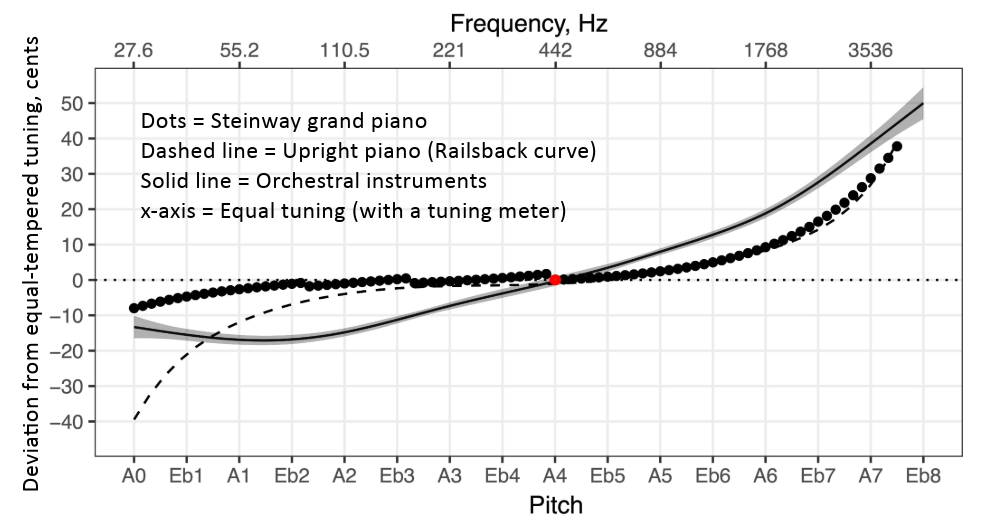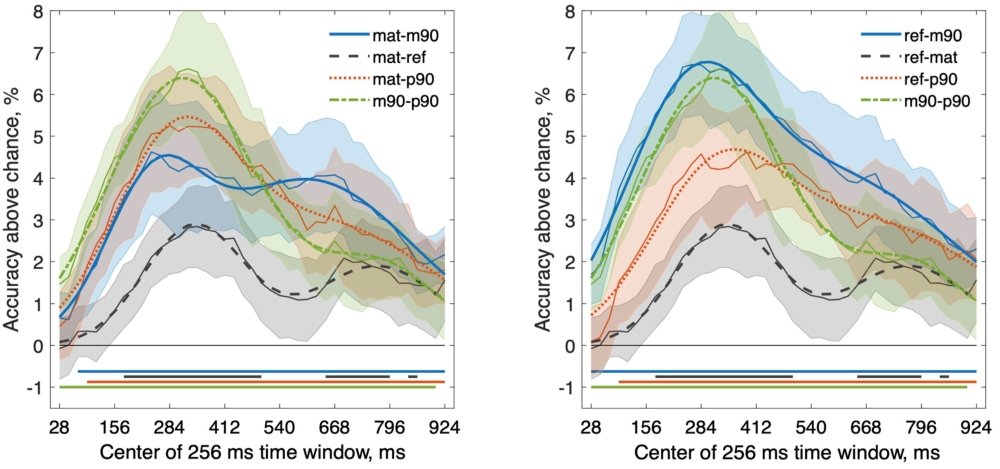Our brain favours harmony
Music is one of those experiences that brings joy and inspires emotions universally. But why do we find pleasure in listening to music? One of the keys is harmony, which rests on the perception of certain musical notes as pleasant or unpleasant.Published 7.11.2024
Text: Jussi Jaatinen
Image: Shutterstock
Editing: Viestintätoimisto Jokiranta Oy
The perception of musical notes as pleasant vs. unpleasant is referred to by the terms consonance and dissonance. Consonance means that a combination of notes is perceived as pleasant, whereas dissonance is often experienced as clashing or unpleasant. Perceived pleasantness is closely associated with the phenomenon of stretched tuning, which has been studied within psychoacoustics and neurosciences.
The octave interval is commonly considered to be a consonant interval in music. It has a frequency ratio of 2:1, in other words, the frequency of the higher note is double the frequency of the lower note. This traditional understanding is based on an equal tuning system (or temperament). Research has, however, shown that the human brain perceives a slightly enlarged octave as more pleasing to the ear than the precise 2:1 frequency ratio. This is called the Octave Stretching Phenomenon.
The octave stretching phenomenon has an impact on the tuning of the entire musical scale. Without the stretched tuning, many musical instruments, such as pianos, would sound out of tune. For instance, concert pianos are systematically tuned using the stretched tuning system. Stretching is not only applicable to the octave but also to the harmony structures of music. It is constantly present in, for example, the tuning of orchestral instruments and affects the perception of music as consonant or dissonant.
In practice, the stretched tuning means that the notes above the reference are more up-tuned than their equal-tuned counterparts and the notes below the reference are correspondingly more down-tuned. In the figure below, the reference A4 (442Hz) is marked in red. Black dots represent the stretched tuning of a Steinway grand piano and the dashed line denotes the average tuning curve for upright pianos. The black solid line represents the average of stretched tuning for orchestral instruments as calculated on the basis of our earlier research (with a confidence interval of 95%). The x-axis shows the equal temperament tuning and the y-axis deviation from equal-tempered tuning in cents (100 cents corresponds to a half step).

Our brain is highly sensitive to these tuning differences, and even the slightest changes between musical notes are detected and processed by the brain. The brain’s responses can be investigated by using, for example, electroencephalography (EEG) and functional magnetic resonance imaging (fMRI). These methods enable us to find those areas in the brain where the perception of well-tuned consonant music and the related experience of pleasure originate. For our research, we are combining data from EEG and fMRI recordings in order to obtain accurate temporal and spatial information of those brain areas and networks that are activated by the perception of well-tuned music.
The brain’s responses to music are complex
Our previous research showed that it is possible to observe the phenomenon of octave stretching in the electroencephalogram (EEG), in other words, there are differences in the processing of consonant and dissonant intervals. An interesting finding is that the different processing of consonant and dissonant intervals is not a single-phase occurrence but, rather, two types of processes are involved.
First, the brain makes a rough distinction between the pleasant and unpleasant intervals at about 200 milliseconds. Then, at about 500 milliseconds, the brain processes more accurately those interval differences that are closest to the subjectively perceived consonance or good tuning. This requires the use of working memory and active processing, which proves that the brain’s responses to music are a complex phenomenon. The figures from the temporal decoding analysis show two separate peaks: the earlier peak denotes the point of time when the brain makes a rough distinction of tone heights whereas the later peak represents the fine distinction.

Why is a certain type of music universally pleasing?
In our previous research, we were able to establish the time windows for the occurrence of rough and fine categorisation. By using the EEG alone, however, it was not possible to clarify which brain areas precisely were activated in these processes. In our current study, we aim to find an answer to this open question by combining the results from two identical experimental settings.
We will use the EEG recordings for temporal information and the fMRI for the anatomical localisation of brain activities. The Representational Similarity Analysis will be applied to combine the data from these recordings. In addition, the fMRI data will be analysed in order to see if the responses evoked by the dissonant vs. consonant musical intervals in the brain’s pleasure centres actually differ from each other.
The phenomenon of stretched tuning and its impact on musical perception is an interesting topic for multidisciplinary research in which the scientific methods of neurophysiology, musical aesthetics and psychoacoustics can be combined. The research will help us to better understand why certain musical phenomena are universally pleasant and how they are processed by our brain.
This research is also important for musicians and listeners of music because the phenomenon of stretched tuning is constantly affecting the ways of playing and perceiving music. Both listeners and performers perceive the music based on stretched tuning as being more pleasant, and their brain will respond to this by eliciting an experience of pleasure.

Jussi Jaatinen, Ph.D., Master of Music, is currently working both as a researcher and musician. Since 1992, he has served as oboist in the Helsinki Philharmonic Orchestra and performed in more than 30 countries. In 2014, Jaatinen started doctoral studies at the University of Helsinki and, in November 2023, received his Ph.D. with his multidisciplinary dissertation entitled Stretched tuning: Psychoacoustic, musical, and neurophysiological analyses of the octave enlargement phenomenon. In August 2024, he began as a postdoctoral researcher at the Faculty of Medicine in the University of Helsinki, with funding granted by the Sakari Alhopuro Foundation.
Links:
Researchgate: https://www.researchgate.net/profile/Jussi-Jaatinen-3
Orcid: https://orcid.org/0000-0003-4976-3474
